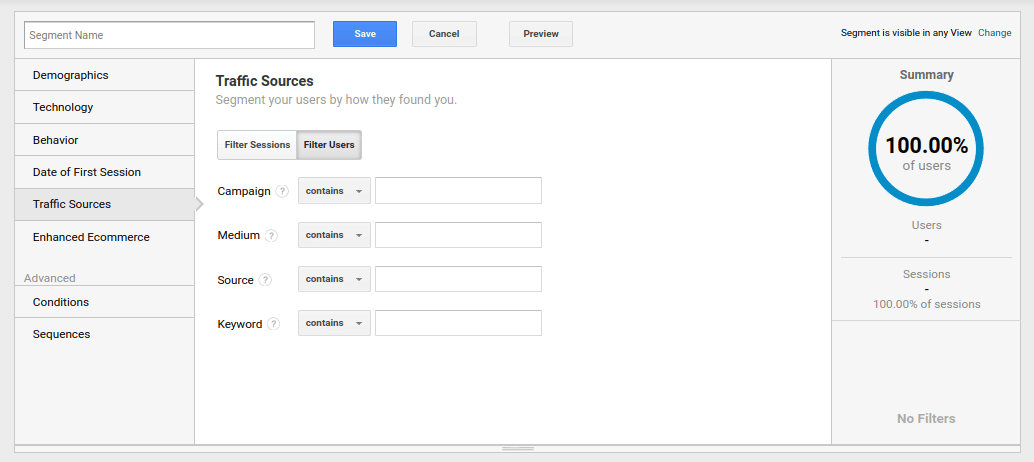Understanding the Power of Remarketing In Google Analytics
Understanding the Power of Remarketing In Google Analytics
Blog Article
Efficient Techniques for Remarketing in Google Analytics
Via tactical audience division, customized remarketing checklists, and engaging ad creatives, services can craft tailored campaigns that resonate with their target audience. By exploring the subtleties of dynamic remarketing and leveraging advanced tracking tools, companies can unlock the full possibility of their remarketing efforts, leading to increased brand exposure and client engagement.
Target Market Division
Utilizing target market division is a pivotal strategy in maximizing the performance of remarketing projects within Google Analytics. By separating your audience into distinct teams based on their actions, demographics, or rate of interests, you can tailor your advertising and marketing messages to be much more appealing and pertinent. This strategy allows you to supply personalized ads to specific sections, enhancing the chance of conversion.

In addition, audience division helps you comprehend the differing requirements and choices of various consumer groups, allowing you to craft even more compelling ad creatives and deals. This targeted approach not just improves the effectiveness of your remarketing efforts but additionally enhances general project performance.
Establishing Up Remarketing Lists
To effectively implement remarketing techniques in Google Analytics, the first action includes creating targeted remarketing checklists based on specific target market interactions. Establishing remarketing checklists permits marketing experts to sector their site visitors into different groups based upon their actions, such as web pages checked out, items searched for, or actions handled the site. By defining these sections, online marketers can after that produce personalized and appropriate ads that target these particular groups, enhancing the probability of conversion.
Remarketing checklists can be set up utilizing numerous standards such as page check outs, period of visit, specific objective completions, and even particular events caused on the site. This degree of customization enables online marketers to customize their ads to match the rate of interests and preferences of each fractional audience, leading to higher interaction and conversion rates.
Furthermore, remarketing lists can also be developed based upon information imported from other sources like CRM systems, permitting for a lot more exact targeting. By setting up these targeted remarketing checklists, online marketers can successfully reach out to potential consumers that have currently shown interest in their solutions or products, making the most of the influence of their remarketing projects.
Creating Engaging Ad Creatives
After segmenting website site visitors right into targeted remarketing checklists based upon specific audience interactions, the following vital action is to craft engaging ad creatives that reverberate with each fractional team's passions and choices. The efficiency of remarketing campaigns heavily relies upon the capability of these advertisement creatives to capture the attention of the target market and drive them to take the wanted activity.
To produce compelling ad creatives, it is important to recognize the one-of-a-kind attributes of each segmented team (What Is “Remarketing” In Google Analytics?). Tailoring the messaging, visuals, and provides to align with the interests and choices of the target market can dramatically boost the possibilities of conversion. Using dynamic advertisements that immediately change web content based upon the user's behavior can additionally boost the customization of the ad experience

Monitoring Efficiency and Optimization
Efficient surveillance of project efficiency and continuous optimization are crucial facets of effective remarketing approaches in Google Analytics. To ensure the performance of remarketing campaigns, marketing professionals need to on a regular basis track essential efficiency metrics such as click-through rates, conversion rates, and return on advertisement spend. By keeping an eye on these metrics, online marketers Extra resources can get important understandings right into the performance of their projects and identify locations for improvement.
In Google Analytics, online marketers can utilize devices like conversion monitoring and target market segmentation to assess the efficiency of their remarketing projects. Conversion tracking permits marketing experts to track particular activities that users take after clicking on a remarketing advertisement, giving valuable information on the effectiveness of the campaign in driving preferred end results. Audience segmentation, on the various other hand, allows marketers to split their target market into various sections based upon various criteria such as demographics, habits, and rate of interests, permitting more targeted and personalized remarketing initiatives.
Continual optimization is vital for maximizing the impact of remarketing projects. Marketers ought to use A/B testing to explore various ad creatives, messaging, and targeting techniques to identify one of the most efficient methods. By on a regular basis assessing project efficiency information and making data-driven optimizations, marketing experts can make certain that their remarketing projects are accomplishing the wanted outcomes and driving conversions successfully.
Leveraging Dynamic Remarketing
Using dynamic remarketing can considerably enhance the importance and influence of targeted advertisements in Google Analytics. This sophisticated technique allows marketers to reveal tailored advertisements to users that have actually formerly seen their website or utilized their mobile app. By dynamically displaying service or products that the users have revealed rate of interest in, this dynamic remarketing helps to maintain the brand fresh in their minds and encourages them to go back to finish a purchase.

In addition, dynamic remarketing campaigns can be automated and maximized in real-time based on efficiency data, making certain that the ads remain reliable and relevant. By leveraging vibrant remarketing in Google Analytics, advertisers can create extra impactful and targeted advertising and marketing campaigns that reverberate with their audience and drive results.
Final Thought
In final thought, reliable remarketing strategies in Google Analytics include audience division, targeted remarketing lists, compelling ad creatives, efficiency tracking, and dynamic remarketing. By concentrating on tailored ads, data analysis, and continual optimization, businesses can enhance conversion rates and drive interaction effectively. Leveraging devices like conversion tracking makes sure that advertisements continue to be appropriate and individualized, bring about total success in remarketing efforts.
With calculated audience division, tailored remarketing listings, and appealing ad creatives, companies can craft individualized campaigns that resonate with their target audience. Utilizing vibrant advertisements that instantly adjust material based on the user's behavior can also boost the personalization of the advertisement experience.
Conversion tracking allows marketing professionals to track particular activities that customers take after clicking on a remarketing advertisement, offering beneficial information on the effectiveness of the campaign in driving wanted results.Using dynamic remarketing can substantially boost the significance and impact of targeted discover this advertisements in Google Analytics - What Is “Remarketing” In Google Analytics?.In verdict, efficient remarketing strategies in Google Analytics involve target market segmentation, targeted remarketing lists, engaging advertisement creatives, efficiency surveillance, and dynamic remarketing
Report this page